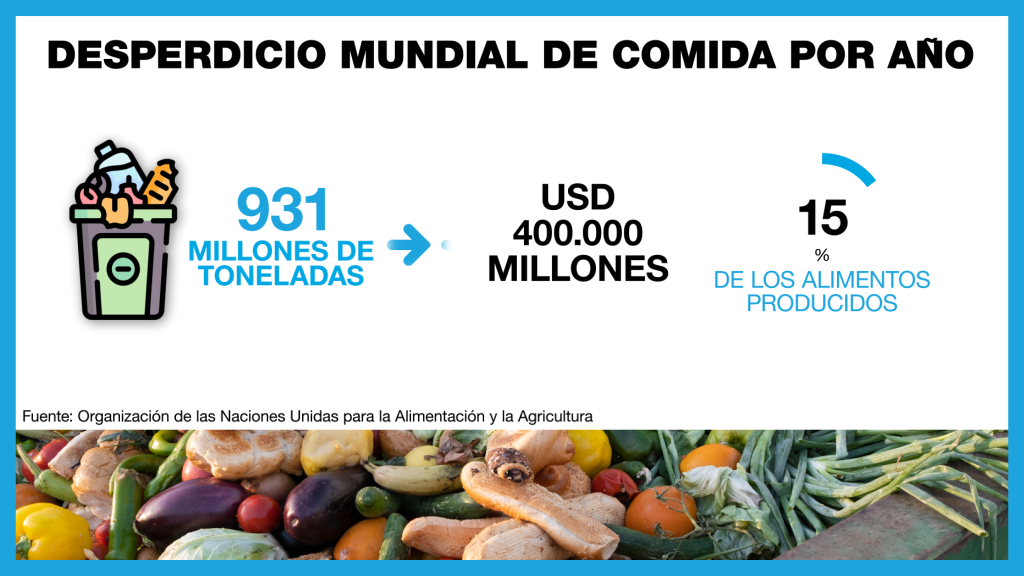First modification:
Global food waste generates losses of around 400,000 million dollars each year and implies the wastage of 14% of the food produced worldwide, according to the Food and Agriculture Organization of the United Nations (FAO).
Some 931 million tons of food end up in the garbage every year in the world and the phenomenon will be on the rise in the next decade, indicates the study “Agricultural Perspectives 2023-2032”, prepared jointly by the United Nations and the Organization for Economic Cooperation and Economic Development (OECD).
Food losses along the distribution chain could rise from 180 million tons today to 234 in 2032. Meanwhile, another 157 million tons would be wasted on crops, 20 million more than today.
Both organizations attribute the situation to various factors, including “constant economic risks”, such as the rise in energy prices or the impact of the war in Ukraine on world food production.
One of the consequences of the war has to do with the rise in the prices of fertilizers, of which Russia is one of the main suppliers. FAO calculations suggest that each 1% increase in the value of this input would imply a final increase of 0.2% in the cost of all agricultural raw materials.
Food prices fall to their lowest level in two years
The world price index prepared monthly by the FAO stood at 122.3 points in June, 1.4% lower than in May and 20% lower than a year ago, according to the report released this Friday, July 7.
Pushed lower by a drop in the cost of sugar, vegetable oils, cereals and dairy products, this index marked the lowest since April 2021 and put world prices 23.4% below the all-time high of March 2022, following the start of the Russian invasion of Ukraine.
The organization stressed that, however, food prices by country are a determining factor in the high levels of hunger in 45 countries with famine problems, 33 of which are located in Africa, nine in Asia, to which Add Haiti, Ukraine and Venezuela.
With Reuters and EFE







![[Img #74675]](https://thelatestnews.world/wp-content/uploads/2024/12/They-discover-a-new-class-of-X-ray-sources-in-the-150x150.jpg)




